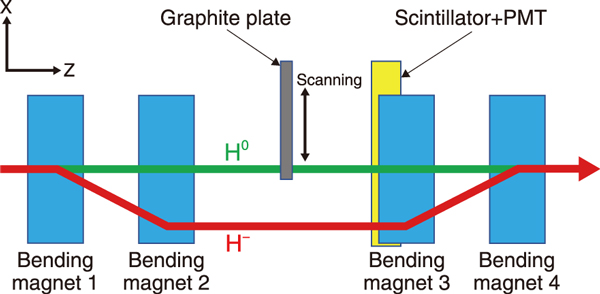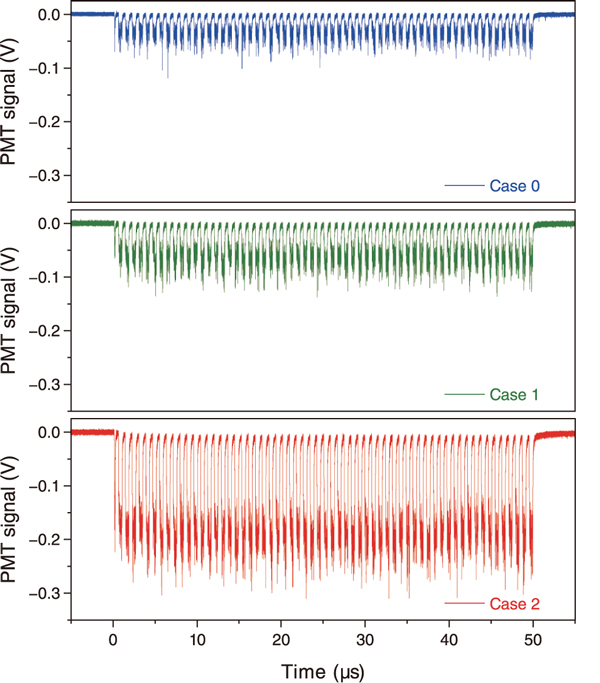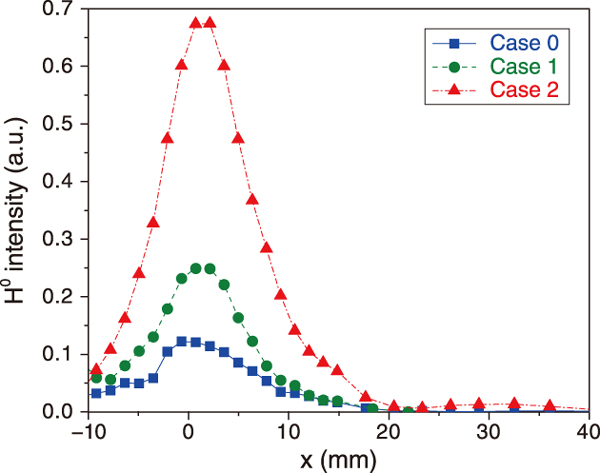
Fig.1 Diagnostic line for H0 particles in MEBT2

Fig.2 Examples of detected PMT signals measured at different gas pressures

Fig.3 Horizontal intensity distribution of the H0 particles in MEBT2
Beam loss accompanied by high-intensity beam acceleration, even if it is only a small fraction of the beam, can cause activation of the accelerator components. Therefore, beam loss is a critical issue in high-intensity accelerators from the viewpoint of reducing radiation exposure. In the J-PARC linac, high-intensity negative hydrogen (H-) beams are accelerated to 191 MeV by the separated drift tube linac (SDTL) and then to 400 MeV by the annular-ring coupled structure (ACS). The accelerated H- ions can lose their electrons mainly due to the following factors:
• Residual gas stripping caused by the collisions of accelerated H- ions with residual gases
• Intra-beam stripping caused by collisions between H- ions in the radiofrequency (RF) bunch
• Field stripping caused by an external electric or magnetic field
These electron-stripping phenomena, which generate uncontrollable neutral hydrogen (H0) particles, are characteristic beam loss factors of H- linacs. Hence, it is imperative to perform a detailed stripping loss assessment for mitigation of beam loss, but a specific strategy has not yet been established.
To diagnose the H0 particles at the exit of the SDTL section, we developed a dedicated diagnostic line in the second medium energy beam transport (MEBT2) between the SDTL and ACS (Fig.1). In this diagnostic line, H0 particles are separated from the H- beam, and the secondary radiations generated by H0 particles colliding with the graphite plate are detected using a scintillator and PMT. The beam loss due to residual gas stripping can be evaluated by measuring the relative intensities of the PMT signal. Examples of the detected PMT signals are shown in Fig.2, and the measured intensity profiles of the H0 particles are shown in Fig.3. The analysis revealed that approximately half of the H0 particles detected in MEBT2 under the normal vacuum condition were generated by residual gas stripping in the SDTL section. Loss estimation based on the cross-sections of the residual gas stripping and intra-beam stripping showed that the remaining H0 particles were likely generated mainly by intra-beam stripping. Moreover, for the ACS section, the residual gas pressure in the ACS cavities is an order of magnitude lower than that in the SDTL cavities; accordingly, the stripping loss is mainly attributed to intra-beam stripping.
In this study, we showed that further improvement of the residual pressure in the SDTL section is effective for mitigating beam loss in the J-PARC linac.
(Jun Tamura)
<Previous: 5 Neutron and Synchrotron Radiation Research | Next: 5-2>